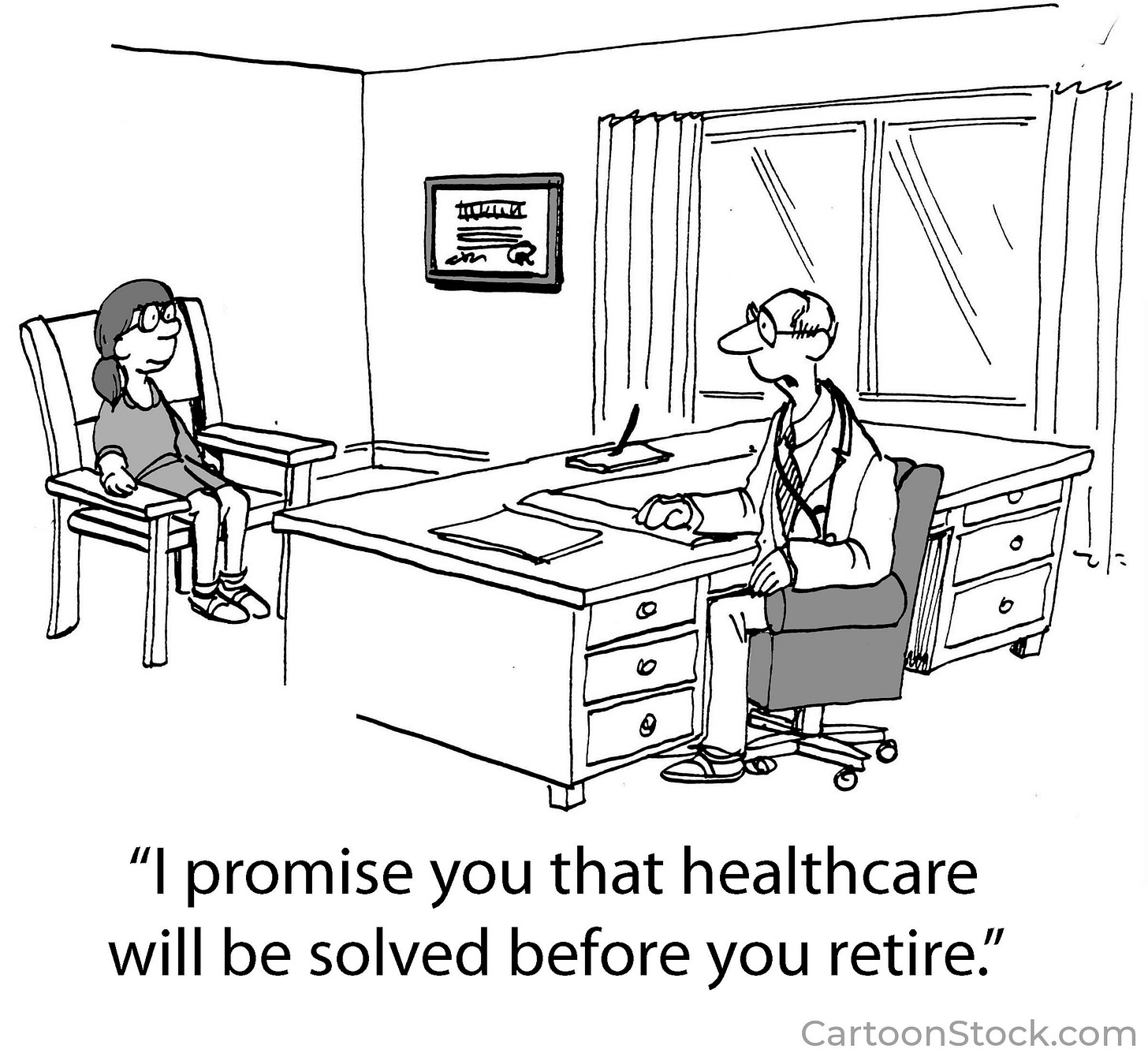Compassion Fatigue, Moral Distress, and Burnout: What Nurses Should Know
New Column in Cancer Nursing Today
A bit of my newest essay—Keep reading on the Cancer Nursing Today website.
The first time I heard the phrase “compassion fatigue,” it was as if someone shone a light into the darkness of the challenges I faced working in bone-marrow transplant. The term “moral distress,” which became prevalent during the COVID-19 pandemic, felt similarly eye-opening in its ability to capture the ethical strains of nursing under duress. Finally, there’s “burnout,” a term all nurses know.
In this column, a sequel of sorts to last month’s (“Self-Care Isn’t the Cure to Burnout, Managerial Support Is”), I explore these terms to help nurses name their difficult work experiences. My goal is to give nurses a theoretical, value-based framework for understanding why being a nurse can feel so impossibly hard at times.
A note:
I like writing for Cancer Nursing Today because they are interested in the issues nurses face right now. I’ve always believed that the first step to solving problems is naming them and that’s why I find these columns important. Of course, the trick is finding the tone that names the problem and in the process empowers nurses, without making the problems in health care seem impossible to solve. Nurses (and indeed all health care workers) have a tremendous commitment to the job and as a profession we tend to be good at walking that line between realistic hopefulness and hopelessness. I strive to find that same balance in my writing, while acknowledging that the problems in health care are big and at times can feel insurmountable.
I’m interested in your thoughts on balancing honesty, hope and commitment. Add a comment below, if you’d like, toggling over to the essay and then returning here.
Pringles!
If you remember from my Grand Canyon essay, a container of Pringles was key to me finishing the hike up and out of the canyon. My friend Julia sent me this New York Times article on that very topic: “Saving Lives at the Grand Canyon, One Salty Snack at a Time.” You will see in the photo below that I have taken the salty snack advice very much to heart. Also, my parents would never buy us Pringles and as a kid I loved how they tasted, of course, but also how they fit together one on top of another in their special canister. So, Pringles are a life-saving salty snack and a forbidden indulgence—who wouldn’t want that on a hike!
Hugs to all,
Theresa






The four patients you describe remind me of the rehab unit in the nursing home where I am employed. Nursing homes have become acute care centers. The hospitals stabilize the patient and then they are sent to a nursing home for further treatment. The nurse often has around fifteen patients to care for and it is challenging and damaging to the soul. Family members often take up the nurse's time with concerns. The documentation is extensive due to medicare notes. So the nurse is quite busy. I do not see future changes because it is all about the money.
Defining the terms and differentiating among them is important, because each requires a different response and management plan. I think it is also important to help healthcare professionals acquire the “armor” needed to function at the bedside. I don’t mean to suggest that individuals become numb to the suffering and focus on the task at hand. Rather, I think that an acknowledgment that the work environment is stressful is required, followed by the statement “and knowing that, here are some practical strategies which you may need to employ to do your job well without having it destroy you”. I am a doctor, not a nurse, so I wouldn’t presume to suggest what those strategies could be. However, having shared various clinical spaces with other healthcare staff, including nurses, I think there are things I’ve observed which appear to be common concerns: opportunities for self-care (the usual ADLs); simple courtesy and kindness to colleagues; no “acting out” drama (to my great regret, I have been guilty of letting my own anxieties about a particular patient impact my actions on a floor or in a critical care unit); and the acknowledgement that remaining vulnerable and open are not personal flaws but rather valued traits for empathic practitioners.
At one hospital I worked at, I was always getting called to the ED for admissions, and when I would arrive, I’d see staff busy with patients tucked in rooms, hallways, wherever there was space, with a constant stream of ambulances bringing in more folks needing care. After a few call nights, I started bringing in chocolate, first for the nurse taking care of my patient, then for the whole group. It eventually ratcheted up to arranging for multiple pizzas to be delivered directly on those crazy nights where the thought of a meal break was unrealistic. My wife, herself a nurse, would remind me that food is not always the answer to stress, or even the best response, and I would acknowledge that, but then tell her it at least provided some relief immediately. As you and others continue to address these issues, Theresa, I imagine you will consider other options which will address these three concerns in a more comprehensive fashion. As a current patient, I want nurses whom I encounter to feel respected, rested, and resilient as they tackle one of the most challenging healthcare jobs in the industry.